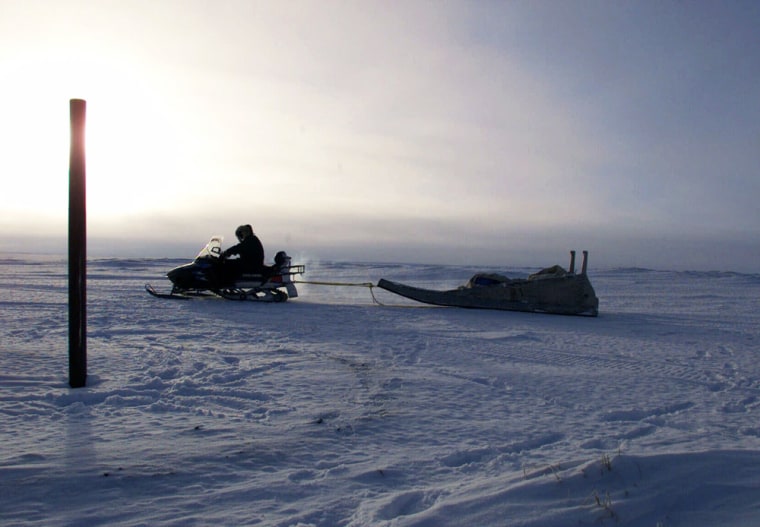Residents of tiny Kaktovik, the only town inside the Arctic National Wildlife Refuge, gathered in front of their TV sets to follow a debate 3,100 miles away in Washington on whether oil drilling should be allowed in their backyard.
A majority of the Senate voted Wednesday in favor of allowing oil companies into the refuge's 1.5-million-acre coastal plain, where billions of barrels of crude oil are believed to rest beneath the tundra.
Officially, Kaktovik — which has only 284 residents, most of them Inupiat eskimos — supports responsible development of oil and gas in the refuge.
But the reaction of many in the town was one of wariness.
Whether residents support the plan or not, Mayor Lon Sonsalla said just about everybody has concerns about changes that could occur should oil and gas development take place.
Hunting, fishing, burial concerns
“Today’s vote to us means that we are now given notice that we have to be on our toes,” he said.
Sonsalla said Kaktovik must have a say in developing the rules for oil and gas development in the refuge, and residents’ access to traditional hunting and fishing areas must be preserved.
Fenton Rexford, tribal administrator of the Native village of Kaktovik, agreed. The Inupiat village’s traditional lands are governed separately from the city of Kaktovik.
Rexford said the tribal government’s responsibility is to protect traditional hunting and camping areas and cemeteries.
“There’s monetary value and then there is value as far as subsistence sites, camping sites, fishing sites,” he said.
Alaska politicians ecstatic
Reaction to the Senate vote by the state’s political leaders was enthusiastic. For decades, Alaskan politicians have urged Congress to open the refuge to drilling. Those calls grew louder with the decline of oil moving through the Trans-Alaska pipeline in recent years.
Democratic state Sen. Donald Olson, whose district includes Kaktovik, is a longtime supporter of opening the refuge.
“I’m glad that it passed,” he said. “I just want to make sure that the concerns and issues of the local people and Mayor Lon Sonsalla are on the front of our radar screen so they are not overrun by industry.”
Gov. Frank Murkowski, who championed opening the refuge while a U.S. senator, said he has no doubts that oil drilling will take place and expects Alaskans will benefit from the revenues shared with the federal government.
The Senate still must pass the budget package in which the proposal was included. The House must take up the issue in an energy package.
“It’s like winning one skirmish in a bigger battle,” said Republican state House Majority Leader John Coghill.
